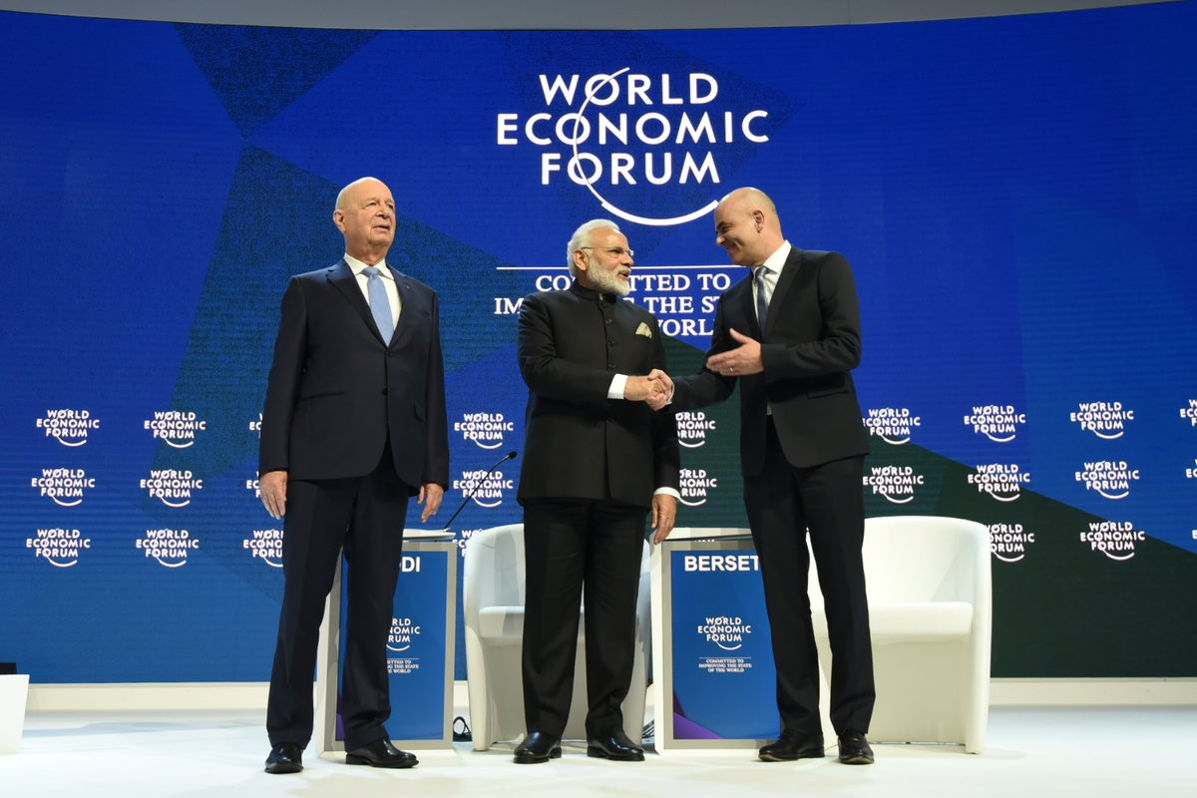NEW DELHI, India (ViaNews) – On the day of Indian Prime Minister Narendra Modi’s keynote address at WEF (World Economic Forum) in Davos, the IMF said Indian economy is projected to achieve a growth rate of 7.4% in 2018 compared to 6.6% for China. The growth will take India to the top of the rankings of the fastest-growing emerging economies in the world.

The accelerated growth rate comes as good news for the country following a slowdown in 2017 under the combined impact of Good and Service Tax (GST) implementation and demonetisation.
As part of its latest World Economic Outlook (WEO) update, the International Monetary Fund has also come out with the projection of a 7.8% growth for the Indian economy for the year 2019. The global body made this release on Monday on the sidelines of the World Economic Forum being held in the town of Davos, Switzerland.

The expected growth rate for China over the same period is projected to be respectively 6.6 and 6.4 percent, the IMF stated. However, there has been an upward revision in IMF’s world economic growth forecast for 2018 and 2019. As per the report the revision of 3%-9% under the expectations that sweeping tax cuts by the Federal Government in the United States will boost investment in the largest economy in the world and be of great help to its primary trade partner nations. This is an increase of 0.2% points over the last update released in October.

In its statement, IMF said that there had been no change in the aggregate growth forecast for developing economies and emerging markets as far as 2018 and 2029 are concerned. Only the regional outlooks have undergone a marked difference.
Developing and emerging nations in Asia are expected to register growths of around 6.5% over the period of 2018-19 which is largely the same growth rate as that of 2017. It also stated that the region would continue to account for more than half of the growth taking place globally.
China is expected to have a moderate growth with the 2018 and 2019 forecasts having a slight upwardly revision against the estimates of a fall which mirrors stronger demand from external markets. Growth is expected to gather pace in India while remaining mostly stable in the ASEAN-5 territory. The year 2017 saw China nudging ahead of India in terms of annual growth rate (6.8% against 6.7%), earning the former the tag of being the fastest growing nation among all the emerging economies. An accolade received by China for most years in several decades gone by.
What is notable to hear is that up until 2016, India was the fastest growing among nations that were part of emerging economies, registering a growth rate of 7.1 percent. However, the impact of demonetization and Goods and Services Tax over end-2016 and early-2017, the economy slowed to 6.7 percent in 2016 and continued at the same rate for 2017.
However, the signs of the economy undergoing a revival started with the industrial output in November with 8.4 percent, highest ever in last 24 months. Hindustan Unilever, a leading manufacturer of consumer goods reported growth in volume by 11 percent during the final quarter of 2017. Indian exports have also seen tremendous growth rate over the last couple of months buoyed by resurgence in the global economy while there has been robustness in automobile sales.
The surge in the stock markets has been hitting successive record highs over the last few weeks on the backs of various factors such as optimism in earnings and revival prospects. While throwing light on some key risk factors facing global growth, the IMF highlighted the political uncertainty prevailing in some nations as one of the major challenges.
Geopolitical tensions, inward-looking policies, rich asset valuations, and a faster-than-expected increase in interest rates and core inflation in advanced economies are among the other issues.
Maurice Obstfeld, Director of Research at IMF said, “The world economy is gathering speed at the beginning of 2018, and this is undoubtedly good news. Nevertheless, policymakers and political leaders need to be mindful of the fact that the economic momentum seen at present is a reflection of a confluence of factors whose chances of lasting for long are pretty slim.”
“Implementing structural reforms is one of the biggest shared priorities across the global economies with the aim of better inclusive growth and boost in potential net output,” IMF said.

